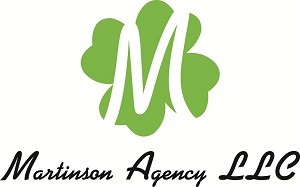Holiday Decoration Safety
November 20th, 2018 — Martinson Agency LLC — Chaska, MN
As the holiday season approaches, many of us decorate our homes with lights and other fixtures to show our excitement. We at the Martinson Agency in Chaska, with the help of our friends at the US Consumer Product Safety Commission (CPSC) would like to provide you with tips for decorating your home safely.
The CPSC estimates that annually, almost 15,000 people are treated by the emergency room due to injuries pertaining to holiday decorations. This comes out to roughly 250 injuries per day during the months of November and December. A few reasons for these injuries were fires, falls and strains.
Falls accounted for 41% of decorating injuries. This could mean falling from a ladder, tripping over a cord or any other fall relating to holiday decorations. So how do we avoid falling?
- As they say in sports, father time is undefeated. If you’re getting older or simply losing some of your athleticism maybe it is time to stay off the roof and let a professional help you out. HIRE SOMEONE!!!
- If you insist on “DIY” make sure to have a spotter while you are working. Someone needs to able to help in case of an emergency.
- While placing decorations, make sure to keep a clear walkway so your guests have a clear path to your front door.
The two most common reasons for fires during the holiday season are Christmas trees and candles. (Shocking, we know.) Roughly 1,200 fires were started due to candles and 100 fires started due to Christmas trees. So what can we do to prevent this?
- If you are setting up a Christmas tree in your home, make sure to keep it away from heat sources such as fireplaces, vents and radiators.
- If you are purchasing an artificial tree, look for something that is fire resistant. This will be listed on the label/box. It DOES NOT mean that the tree cannot catch on fire but rather that it is more resistant to it.
- With regards to candles, keep them burning within your sight. Also please be sure to extinguish them before you leave the room. (Do not burn candles while you sleep!)
- Always keep candles on a steady and heat resistant surface.
Holiday season is a great time of the year and decorating your home is an exciting part of it. Please keep in mind that safety is the most important factor. Follow these tips to help ensure an injury free holiday. If you have any questions or are interested in finding out how your insurance relates to this issue please contact Martinson Agency in Chaska, MN today!
Don’t leave your insurance to luck! Call today!
Phone: (952) 314-4400
Email: jphagen@aibme.com
Website: www.martinsonagency.com

 Contact
Contact Email an Agent
Email an Agent

 Click to Call
Click to Call Get Directions
Get Directions


